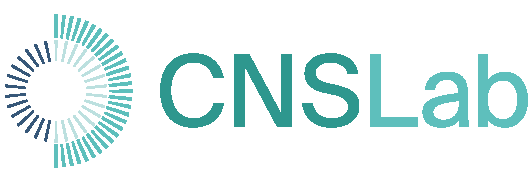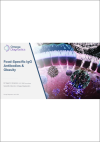IgG Activation of Mast Cells Contributing to Inflammation and Release of Histamine – The Missing Piece in the Puzzle

Shedding new light on accepted scientific ground is always exciting. No more so than in the quest to unravel the complexity behind our unique immune and non-immune responses to foods. Hence, we are spotlighting the complex subject of mast cell (MS) activation in the gut, particularly in relation to irritable bowel syndrome (IBS) and gastrointestinal symptoms. We explore how our IgG immune response to foods may be directly responsible for symptoms by triggering the release of histamine, and other primary effector mediators, released from mast cells in the gut.
How many of your patients present with difficult to resolve gastrointestinal symptoms which are temporarily resolved on an exclusion diet?
In this article we are exploring the research on new mechanisms which may be the missing piece in the complex IBS puzzle.
You may be familiar with mast cell activation syndrome (MCAS), initially described in 2010 (1) which is being increasingly used as a diagnosis for those presenting with signs and symptoms involving the gastrointestinal tract, dermis, and cardiovascular system, often accompanied by neurological complaints. Such patients may have often undergone multiple medical evaluations by different physicians without a definitive medical diagnosis, until the diagnosis of MCAS is applied.
With MCAS, the body's mast cells are being created in normal numbers but are over responsive to dietary or environmental triggers, resulting in excess histamine production. Excess histamine can cause severe inflammation and a wide variety of symptoms. Some of us have trigger-happy mast cells, primed to over respond.
In our October webinar Dr Nigel Abraham explored the relationship between IgG antibody complex formation with food proteins and our subsequent mast cell and histamine response in the gut. Could mast cells be the missing link related to inflammation in IBS?
What exactly are mast cells and what is their role?
Mast cells are immune cells present in the tissue of virtually every organ of the body. They are present at both mucosal and smooth tissue membrane surfaces, in lymphoid tissues and connective tissues, and are associated with blood vessels, nerves and tumours.
In the bronchial or nasal mucosa, the mast cell is one of the first cells to interact with inhaled allergens, stimulating symptoms. In contrast, the skin mast cell is located in the dermis, well away from the external environment. It may also participate in immediate allergic responses, as seen by the production of a wheal that is largely histamine-mediated at the site of the allergen in atopic patients. The lungs and skin have a particularly high histamine storage capacity. The local environment of both the bronchial and dermal mast cells has defined their development into cells with distinct phenotypes and functions unique to their environment, including sensitivity to non-immunological activation (2).
Due to their distribution in tissues and not in the blood, mast cells are distinct from basophils, which are essentially blood leucocytes which migrate to the site of an inflammatory event and secrete various mediators. These mediators include cytokines, chemokines, and proteases.
We are familiar with the mast cell’s high affinity binding with IgE, as part of the innate immune system, inducing a rapid and often dramatic response to pathogens and allergens, such as bronchial constriction and swelling, and secreting a wide range of mediators. But the mast cell’s association with IgG and the adaptive immune system is less well understood.
When activated, mast cells degranulate, releasing inflammatory mediators (see fig. 1). These mediators can be categorised into three sections: primary effector mediators, inducers of chronic inflammation, and proteoglycans and enzymes. Primary effector mediators are those substances involved in immediate hypersensitivity or allergic reactions, including histamine, prostaglandin D2 and leukotrienes.

FIG. 1 MAST CELL ACTIVATION AND EXOCYTOSIS
(Source: https://www.sciencedirect.com/science/article/abs/pii/S0168365915000954?via%3Dihub)
The mediator histamine has a half-life of less than one minute because of its rapid metabolism to inactive products by the two enzymes histamine-N-methyl histamine (70%) and diamine oxidase (30%). Genetic SNPs may contribute to a reduced ability to metabolise histamine, contributing to its sustained systemic circulation. Independent of each individual’s production of enzymes, there is always a continuous low-level circulation of histamine. When levels reach around 1 ng/ml, the typical systemic effect of histamine, namely flushing, headache and hypotension, are observed.
Mast cells are associated with many symptoms and pathologies (see Fig. 2) including type I hypersensitivity reactions, mastocytosis, mast cell activation syndrome (MAST), and urticaria, asthma and dermatitis (3).

FIG. 2 CONDITIONS ASSOCIATED WITH MAST CELL ACTIVATION
Mast cell activation is highly complex and reliant on the well-regulated communication between cells by bio-informational small molecules synthesised by one tissue and subsequently recognised by others. Every target cell has receptors that recognise a large number of pre-formed secretory chemicals, activating an appropriate response. The final stage following initial antigen-induced receptor activation is termed exocytosis and is the process by which cells move materials from within the cell into the extracellular fluid (see fig. 1).
For cells to respond instantly but not excessively to chronic antigen exposure and receptor signalling, they have developed a variety of feedback mechanisms to alter the sensitivity of the system and counter further exocytosis. This process is called desensitisation or adaptation, a familiar term in the field of allergy.
Drawing our focus back to IBS specifically, the gut microenvironment includes substances such as commensal bacteria, food antigens, allergens, and toxins all of which are able to activate mast cells. Specific bacteria, such as Klebsiella aerogenes, have been identified as super-producers of histamine, that can cause pain flare-ups in some patients with irritable bowel syndrome (IBS). Klebsiella aerogenes converts histidine into histamine a known mediator of pain (4).
Many patients with IBS have histories of adverse food reactions; 60% of patients with IBS report the onset or worsening of symptoms after meals (5,6), however the underlying mechanisms have not been fully understood (7). But what is evidenced is that there is a significantly increased mucosal mast cell count/or density in patients with IBS (8) and other functional gastrointestinal disorders (FGIDs).
In the case of IBS, it is evident that microbial or food antigens trigger an immune response beyond the mucosal immune system’s capacity to cope. Once the regulatory pathways of oral tolerance are breached, inflammatory pathways dominate, and chronic intestinal inflammation can result.
Specific IgG mast cell receptors called FcyRs have been identified. These receptors possess a low affinity binding so will only activate mast cell exocytosis after sufficient IgG food antigen immune complexes have built up. These types of activations have been overlooked for a long time in favour of IgE antibodies and IgE receptors (FcεRI) which have previously been accepted as the main immunological pathway for mast cell activation. However, to date there is no direct evidence to suggest that classical IgE-mediated type 1 allergic reactions to food antigens play a role in the symptoms of IBS. The door is open for the exploration of IgG involvement through IgG-mediated sensitisation of mast cells and the closer examination of the foods that we are eating, and the quantity and frequency of their consumption.
Research reveals symptomatic improvements in IBS using an elimination diet based on IgG food sensitivity testing (9), although the mechanisms have not previously been associated with mast cells. Some of the improvements can be explained by diminished mast cell activations due to decreased IgG-food antigen immune complexes, after following changes to diet following testing.
Once activated by foods and other antigens, mast cells may contribute further to IgG food sensitivities as they play a role in the regulation of gut epithelial barrier function contributing towards leaky gut. Leaky gut predisposes towards food sensitivities, as undigested food proteins gain access to the bloodstream thus stimulating the formation of further IgG food antigen complexes, perpetuating a vicious cycle.
If we add stress into the mix, including psychological stress, the symptoms of IBS may be further exacerbated. The induction of cortisol releasing hormone (CRH) in response to stress contributes to mast cell degranulation which actively increases intestinal permeability.
The mast cell link between IBS and migraine as a part of the gut brain axis (10) is explored in our webinar. Mast cells and nerves communicate bidirectionally, releasing bio-active, pro-inflammatory mediators resulting in a variety of neuronal effects including both peristalsis and pain signalling, commonly reported symptoms if IBS (9). Leaky gut can translate to leaky brain, as mast cells similarly affect disruption/permeability of the blood brain barrier enabling toxin and immune cell entry, exacerbating an inflammatory microenvironment.
IgG not only protects us against foreign infectious agents but is also a mediator of inflammation and recent observations show that mast cells contain IL-3 to IL-6 and TNF and may further contribute to chronic inflammation (11). The mast cell can therefore be regarded as a primary initiating cell for both the early allergic response and for chronic/continuing allergic inflammation.
Could chronic inflammation in response to IgG mast cell activation be the common factor in the pathogenesis of some IBS patients and be considered as the missing piece of the puzzle?
By checking your patients’ food-specific IgG antibody levels and selecting foods to be restricted and rotated you may be significantly contributing to IBS symptom relief via a direct reduction in mast cell activators. In the future, elimination of dietary and other mast cell activators may give more promising results for the treatment of IBS.
Following our webinar, several questions were asked about the potential development of medications to suppress unique mast cell receptors that bind to IgG antibodies. Relief may be found in medications that block the production of inflammatory molecules, such as leukotrienes, and a place for antihistamines and mast cell stabilisers, such as sodium cromoglycate or ketotifen (12), but more research is needed. IBS represents a fertile soil for research for both gastroenterologists and allergy/immunologists alike. But before you reach for the medicine cabinet, read our tips on lifestyle and nutrient considerations.
REFERENCES
- https://www.ncbi.nlm.nih.gov/pmc/articles/PMC3753019/ Akin C, Valent P, Metcalfe DD. Mast cell activation syndrome: Proposed diagnostic criteria. J Allergy Clin Immunol. 2010 Dec;126(6):1099-104.e4. doi: 10.1016/j.jaci.2010.08.035. Epub 2010 Oct 28. PMID: 21035176; PMCID: PMC3753019
- Holgate et al, Allergy, 2012. Saunders Ltd. London.
- Fong, M; J Crane. Histology, Mast Cells. May 1 2023. Available at: https://www.ncbi.nlm.nih.gov/books/NBK499904/#:~:text=Mast%20cells%20are%20immune%20cells,into%20a%20mature%20mast%20cell.
- https://www.queensu.ca/gazette/media/news-release-histamine-producing-gut-bacteria-can-trigger-chronic-abdominal-pain
- Bellini M, Gambaccini D, Stasi C, Urbano MT, Marchi S, Usai-Satta P. Irritable bowel syndrome: a disease still searching for pathogenesis, diagnosis and therapy. World J Gastroenterol. 2014 Jul 21;20(27):8807-20. doi: 10.3748/wjg.v20.i27.8807. PMID: 25083055; PMCID: PMC4112881. https://www.ncbi.nlm.nih.gov/pmc/articles/PMC4112881/
- Cuomo R, Andreozzi P, Zito FP, Passananti V, De Carlo G, Sarnelli G. Irritable bowel syndrome and food interaction. World J Gastroenterol. 2014 Jul 21;20(27):8837-45. doi: 10.3748/wjg.v20.i27.8837. PMID: 25083057; PMCID: PMC4112903. https://www.ncbi.nlm.nih.gov/pmc/articles/PMC4112903/
- Zhang L, Song J, Hou X. Mast Cells and Irritable Bowel Syndrome: From the Bench to the Bedside. J Neurogastroenterol Motil. 2016;22(2):181-192. doi:10.5056/jnm15137). https://www.ncbi.nlm.nih.gov/pmc/articles/PMC4819856/
- Sinagra E, Pompei G, Tomasello G, et al. Inflammation in irritable bowel syndrome: Myth or new treatment target?. World J Gastroenterol. 2016;22(7):2242-2255. doi:10.3748/wjg.v22.i7.2242 https://www.ncbi.nlm.nih.gov/pmc/articles/PMC4734999/
- Wouters MM, Vicario M, Santos J. The role of mast cells in functional GI disorders. Gut. 2016;65(1):155-168. doi:10.1136/gutjnl-2015-309151. https://gut.bmj.com/content/65/1/155.long
- Vanuytsel T, van Wanrooy S, Vanheel H, et al. Psychological stress and corticotropin-releasing hormone increase intestinal permeability in humans by a mast cell-dependent mechanism. Gut. 2014;63(8):1293-1299. doi:10.1136/gutjnl-2013-305690 Vanu. https://gut.bmj.com/content/63/8/1293
- Solimando AG, Desantis V, Ribatti D. Mast Cells and Interleukins. Int J Mol Sci. 2022 Nov 13;23(22):14004. doi: 10.3390/ijms232214004. PMID: 36430483; PMCID: PMC9697830. https://www.ncbi.nlm.nih.gov/pmc/articles/PMC9697830/
- Meloto CB, Ingelmo P, Perez EV, Pitt R, González Cárdenas VH, Mohamed N, Sotocinal SG, Bourassa V, Lima LV, Ribeiro-da-Silva A, Mogil JS, Diatchenko L. Mast cell stabilizer ketotifen fumarate reverses inflammatory but not neuropathic-induced mechanical pain in mice. Pain Rep. 2021 Jun 3;6(2):e902. doi: 10.1097/PR9.0000000000000902. PMID: 34104835; PMCID: PMC8177879. https://www.ncbi.nlm.nih.gov/pmc/articles/PMC8177879/








